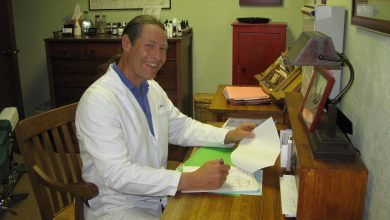Dr. Ashley Nardi – Prema Belly
 Dr. Ashley Nardi helps women and men rediscover how to use their bodies. As a physical therapist and life-long dancer, she has paid close attention to how core strength not only promotes overall stability and movement flexibility, but also supports overall health and well-being. Often, physical issues persist for years limiting quality of life and enjoyment. Dr. Nardi is on a mission to share that you, too, can reclaim your body and she will reveal the magic of how she can help you move with freedom and intention.
Dr. Ashley Nardi helps women and men rediscover how to use their bodies. As a physical therapist and life-long dancer, she has paid close attention to how core strength not only promotes overall stability and movement flexibility, but also supports overall health and well-being. Often, physical issues persist for years limiting quality of life and enjoyment. Dr. Nardi is on a mission to share that you, too, can reclaim your body and she will reveal the magic of how she can help you move with freedom and intention.
Dr. Nardi, thanks for speaking with us today. Can you begin by giving us a little background about your training and history?
I began my love of the musculoskeletal system as a dancer, learning a deep awareness of my body sensations, postural alignment, and ability to consciously isolate and utilize muscles in intricate and specific ways. I enhanced my musculoskeletal knowledge with academic studies in Biology (BS, Mercyhurst University), Exercise Physiology (MS, Case Western Reserve University), and Physical Therapy (Doctorate of Physical Therapy, Drexel University). I have provided physical therapy services to Broadway dancers backstage, Paul Taylor Modern Company and Pennsylvania Ballet dancers, as well as to the general orthopedic population in three outpatient clinics. With peer mentorships, continuing education classes and hands-on training, I advanced my skills in Pilates rehabilitation (Stott Pilates), women’s health core rehabilitation (Kelly Dean), neuromuscular re-education (Institute of Physical Art), and alignment and biomechanics (Katy Bowman).
Please share how your experiences in dance have inspired your work as a physical therapist?
Being a dancer comes with a wide range of injuries that are often difficult to diagnosis, heal and prevent. Visits to doctors for injuries often result in treatment options such as “stop dancing,” “stop running” (I never ran a day in my life), “surgery,” or “wear this brace.” These solutions were less than adequate and, through my frustrations, I was inspired to analyze my own movement patterns, alignment issues, weaknesses, and compensatory strategies to determine the root cause of my own injuries. This enhanced my skill and passion for diagnosing the root causes of difficult symptom presentations. For the first time in my life, I was empowered to heal myself and, since this point, I have been inspired to share this with others.
In addition, body awareness becomes a way of being for a dancer. The movements required of a dancer are abnormal and require hours of repetition prior to developing a muscle memory adequate to perform the steps correctly. This discipline results in a body awareness and presence that is an intricate part of musculoskeletal health. Therefore, I am motivated to educate patients on how to integrate body awareness to enhance the overall quality of life.
How has your own experience of being pregnant and becoming a mother influenced your work?
During the pregnancy of my second child, I developed diabetes. Instead of treating it with insulin or even herbs, I began a thorough process of becoming aware of my body’s messages. I altered my diet, learned what foods I could and couldn’t eat, became aware of the subtle symptoms that I could feel when my blood sugar was off, and left work earlier than expected to ensure that I ate every two hours. Ultimately, I developed a deep sense of trust in my body’s innate ability to function and learned how to nourish my body. Through this experience, I came to recognize that an injury is not a broken body that requires fixing; it is a body that functions perfectly, but requires nourishing. Nourishment of the musculoskeletal system includes becoming aware of your body, learning your body’s optimal skeletal alignment, and developing the ability to perform the movements required for it to function optimally. I appreciate the transformation that occurs in a women’s body to become a mom and I promote women to honor and embody this change. My treatments empower moms to optimally function within this new body and address the physical challenges that a mom faces.
What are some of the first signs and symptoms that you see in patients who come to work with you?
The first complaint I most commonly hear is, “I am frustrated that….I can’t play with my kids, pick up my kids, I am scared I am going to hurt myself again, I have had low back/sacroiliac joint pain for years, I have tried everything and nothing is working, I have leakage every time I go for a walk/hike or sneeze, I just feel like my body does not work, I still look pregnant, I can’t get stronger…. I can’t, I can’t, I can’t… function like a normal person without pain or discomfort.”
Describe for us the physical therapy treatment you utilize to address these issues.
Initially the physical therapy treatment addresses the injured tissue with soft tissue mobilization, instrument-assisted soft tissue mobilization, joint mobilizations, muscle energy techniques and providing the tissue with the most optimal environment in which to heal. Overall treatment focuses on obtaining optimal skeletal alignment through stretching, postural education, and soft tissue work or joint mobilizations, if necessary. In addition, it is important to strengthen the small stabilization musculature by incorporating Pilates Rehabilitation either on the mat, Reformer or Chair. This provides a stable environment to learn how to appropriately activate the muscle without compensations; neuromuscular re-education with tactile, verbal and visual cues; and movement biomechanics to enhance natural movements throughout the day. I emphasize the importance of body awareness, skeletal alignment and appropriately activating muscles. The goal of my physical therapy treatment is to empower patients to nourish their musculoskeletal system to prevent, treat and manage symptoms. Teaching each patient to move with freedom and intention, irrelevant of the nature and severity of symptoms.
Above you mentioned the importance of appropriately activating a muscle; what does that mean? Don’t we do that with all our daily movements already?
Actually it is very common for individuals to perform daily movements and exercise specific movements without knowing how to locate, activate or utilize the appropriate muscles. The movement of our bodies is often the result of the gravitational force acting upon us, rather than the intentional utilization of our musculature. For example, if you stand up and walk around, you might notice that you are falling into each step rather than intentionally activating any muscles to propel you. If you shift your weight into your heels and walk again, you should start to feel that your gluteal muscles (butt muscles) can propel each step you take. So, what did you do differently? You utilized the appropriate skeletal alignment for the gluteal muscles to function optimally and intentionally asked them to work. Each muscle has an optimal length at which it functions most effectively.
This length is determined by the skeletal alignment of its boney attachments. If this alignment is incorrectly lined up, the muscles will not be able to function properly.
In addition, the strength, timing, coordination and force production of a muscle is altered by injury, pain, trauma and disuse. For example, low back pain results in the inability of the multifidus muscles (muscles that stabilize the lumbar spine) to activate. This issue is perpetuated by the compensatory patterns our body learns to utilize when particular muscles do not function appropriately. Oftentimes, the quadratus lumborum or the psoas will begin to compensate for the multifidus and become hypertonic (tight) because they are performing a job that they are inadequate at doing. This muscle activation pattern is inefficient and could lead to many more musculoskeletal aliments. In summary, an injury, pain, or trauma leads to inadequate stability of your skeletal system, compensatory muscle utilization and, ultimately, a perpetuation of the issue. Altering and correcting this neuromuscular programing requires retraining prior to strengthening. Initially, it is not about getting stronger, it is about learning how to activate a muscle appropriately.
Please tell us about your practice name Prema Belly?
My husband utilizes chanting of Sanskrit words to facilitate his clientele in learning emotional awareness and developing clarity and presence in the world. The first chant he introduced me to was Ahum Prema, meaning “I am Divine Love.” The belly is the core of your essence, of who you are; it is where mamas are connected to their babies by the umbilical cord, where your organs are housed, and where the sacral chakra (aka the dwelling place of the self) is located. My intention in utilizing Prema Belly is to encourage others to “Love their Bellies,” to become connected with their physical body, and thus reconnect with themselves. Many times pain, injury, fear of moving, a sedentary lifestyle, and the post partum aspect of pregnancy can disconnect individuals with their bodies. Therefore, utilizing the logo of a pregnant belly is to remind us of a time when the belly is most loved. Reconnecting to the neglected core brings trust back to the body and allows the deeper essence of an individual to emerge…ultimately allowing individuals to move with freedom and partake in their lives without limitations.
You have told me Prema Belly focuses on core training. Explain Core and why it is important.
The “core” is a support system for your low back and pelvic region, a key aspect of postural alignment and ability to move your arms and legs with freedom. The core is also a container for your abdominal contents, suspending your organs off the pelvic floor. These muscles include the breathing diaphragm, the transverse abdominal muscle, the lumbar multifidus and the pelvic floor. A large emphasis of my treatment for low back, sacroiliac joint, mid back, pelvic floor, hip and knee issues are to retrain these core muscles. The initial goal is to create neural networks (aka getting your brain to activate the muscle with appropriate force and timing) to allow this system to function automatically and efficiently (as opposed to strongly). This is essential prior to beginning any core strengthening program because you cannot strengthen a muscle that your brain is not activating.
If you begin with a core strengthening program first without addressing the neuromuscular aspect, you will reinforce non-optimal patterns that may be contributing to your symptoms.
Can you share a recent success story?
I recently treated a patient with hip issues. She was unable to walk long distances without weakness, compensations, and an assistive device. She diligently performed her home exercise program and had undergone treatment from nine other physical therapists with minimal success. As our sessions progressed, I was amazed at the excitement she had about being able to resume her walking activities without assistive devices or limitations. When asked for feedback about our work together she wrote, “Ashley teaches you to access your own body– to feel when the muscle is working and when it is not working. She teaches you to know your own body and to pay attention. She sees you with different eyes, approaching each body for its uniqueness. It was a limitation that brought me to Ashley–a limitation that compromised the quality of my life. Limitations– which made me vulnerable, uncertain, and physically and emotionally weary. Would my life ever get back to normal? And now it is! Ashley gave me my life back.”
You expressed to me that a large part of your goal for this interview is simply to get the word out to people that they can do something about these conditions and, therefore, improve their quality of life.
Yes, it is a large part of my goal.
As a society, we have come to either accept or be embarrassed by pain, and to accept discomfort or abnormal symptoms as a normal part of life. I want people to know that these are not normal. Symptoms are messages from your body asking you to change something; they are not things to live with/accept and there are treatment options for these issues. For example, I am shocked by how common it is for women to suffer for years with low back pain, sacroiliac joint instability, pelvic pain, urinary incontinence and the inability to play with their kids. Many mamas have come to accept these symptoms as a normal aspect of becoming a mom and are often embarrassed to discuss them. They don’t realize that retraining and strengthening their core and altering their posture can treat these symptoms, and allow them to regain the physical aspects of their lives that they gave up.
Finally, any last words or comments you would like to share with our readers?
Stop accepting defeat of not being able to live your life and function as you intend to; take the time each day, in every movement, to honor the beautiful body you have. PREMA BELLY, love your belly, your inner essence, your core of your existence. Use it before you lose it. If you have lost it and have tried other treatments that have failed, know there is still hope. Women and men- -you have control, the choice is yours. Call me to move with freedom and intention.
Learn More:
Prema Belly
258 A Street Suite 12 | Ashland 541-891-1423
www.premabelly.com




